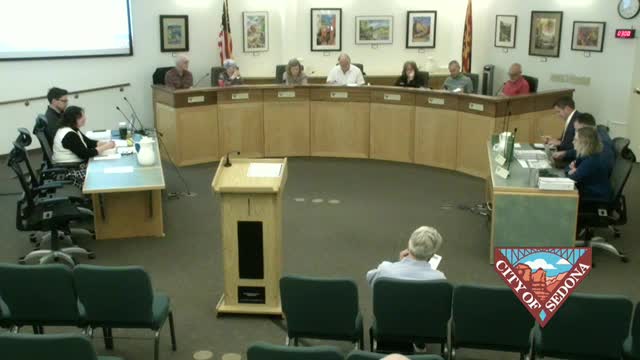Sedona staff present cautious FY26 budget amid uncertain economic outlook
April 30, 2025 | Sedona, Yavapai County, Arizona
This article was created by AI summarizing key points discussed. AI makes mistakes, so for full details and context, please refer to the video of the full meeting. Please report any errors so we can fix them. Report an error »

City of Sedona staff presented an overview of the proposed fiscal 2025–26 budget and warned council members that revenue growth is expected to slow amid national economic uncertainty.
The city’s Director of Financial Services, Barbara Whitehorn, told the council the overall operating budget for FY26 is about $55 million and the capital budget about $46 million. She said the city’s tax base is “resilient” but highly dependent on visitor-related sales and bed taxes, which together account for roughly 61% of total city revenue and about 80% of general-fund receipts. Whitehorn said that budgeted growth in sales and bed tax is modest — about 1.4% over actuals — and that staff took a cautious approach when assembling the proposal.
Why it matters: Sedona’s reliance on tourism-linked taxes makes the city unusually vulnerable to changes in travel and discretionary spending. Slower growth or a drop in visitor spending can force cuts to operations or delay capital projects.
Officials highlighted several pieces of context for councilors. Whitehorn reviewed how sales and bed tax collapsed during the early COVID-19 lockdowns and then rebounded sharply in 2021 and 2022, leaving collections higher than pre-pandemic levels. She said forecasting now anticipates slower revenue growth and continued inflation pressures. Whitehorn also emphasized that the operating and capital budgets behave differently: operating needs trend upward steadily for staff and services, while capital funding rises and falls with one‑time projects.
Council members pressed staff on a range of budget details, including whether one-time capital projects could be deferred, the makeup of contingency balances, and the treatment of projected new costs such as a salary study and modest increases in professional services. Staff noted contingency levels were lower in the current year and that historical averages are higher; they also said bond maturities will reduce debt service substantially over the next two years.
The presentation set up two days of further deliberations; staff scheduled a deeper review of department proposals and capital projects in a subsequent session and asked councilors to focus their questions on clarifying points during the overview so more time is available for final decisions.
Looking ahead: Council will consider adjustments during tomorrow’s deliberations where members can increase or decrease recommended decision packages, move capital items, or alter revenue assumptions.
The city’s Director of Financial Services, Barbara Whitehorn, told the council the overall operating budget for FY26 is about $55 million and the capital budget about $46 million. She said the city’s tax base is “resilient” but highly dependent on visitor-related sales and bed taxes, which together account for roughly 61% of total city revenue and about 80% of general-fund receipts. Whitehorn said that budgeted growth in sales and bed tax is modest — about 1.4% over actuals — and that staff took a cautious approach when assembling the proposal.
Why it matters: Sedona’s reliance on tourism-linked taxes makes the city unusually vulnerable to changes in travel and discretionary spending. Slower growth or a drop in visitor spending can force cuts to operations or delay capital projects.
Officials highlighted several pieces of context for councilors. Whitehorn reviewed how sales and bed tax collapsed during the early COVID-19 lockdowns and then rebounded sharply in 2021 and 2022, leaving collections higher than pre-pandemic levels. She said forecasting now anticipates slower revenue growth and continued inflation pressures. Whitehorn also emphasized that the operating and capital budgets behave differently: operating needs trend upward steadily for staff and services, while capital funding rises and falls with one‑time projects.
Council members pressed staff on a range of budget details, including whether one-time capital projects could be deferred, the makeup of contingency balances, and the treatment of projected new costs such as a salary study and modest increases in professional services. Staff noted contingency levels were lower in the current year and that historical averages are higher; they also said bond maturities will reduce debt service substantially over the next two years.
The presentation set up two days of further deliberations; staff scheduled a deeper review of department proposals and capital projects in a subsequent session and asked councilors to focus their questions on clarifying points during the overview so more time is available for final decisions.
Looking ahead: Council will consider adjustments during tomorrow’s deliberations where members can increase or decrease recommended decision packages, move capital items, or alter revenue assumptions.
View full meeting
This article is based on a recent meeting—watch the full video and explore the complete transcript for deeper insights into the discussion.
View full meeting
